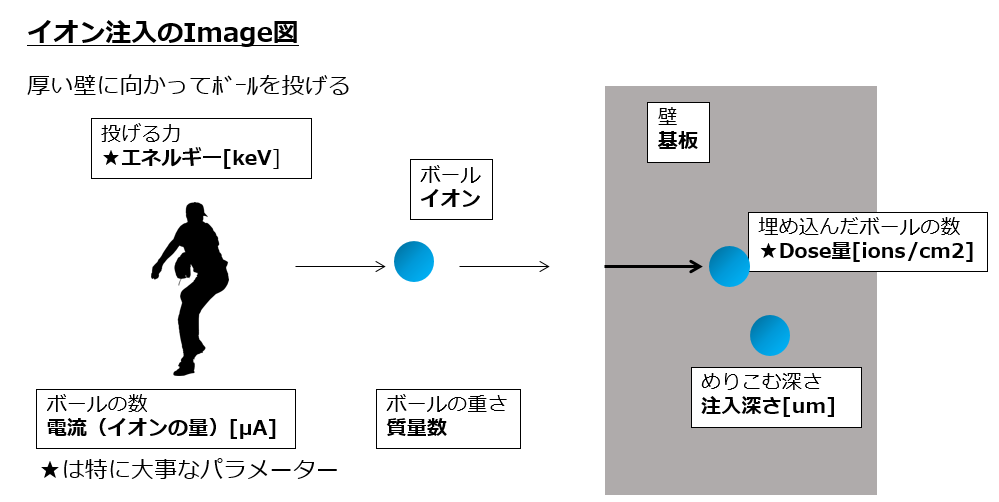This post is also available in: Japanese
Ion implantation is a method of implanting impurities to a semiconductor substrate by ionizing the substance or impurities and accelerating the ion into the substrate.
There are two main purposes of ion implantation. One is to generate carrier to enable electrical control of type P and type N semiconductors. The main process for semiconductor manufacturing utilizes ion implantation for this purpose. Another is to alter the material surface. This includes chemical changes such as in refractive index, and structural changes such as destruction, where the surface is broken down and converted from crystalline to amorphous.
Below are important parameters for ion implantation:
- Energy (KeV)
- Current (μA)
- Mass number
- Desired depth of implantation (μm)
- Dosage (ions/cm2)

